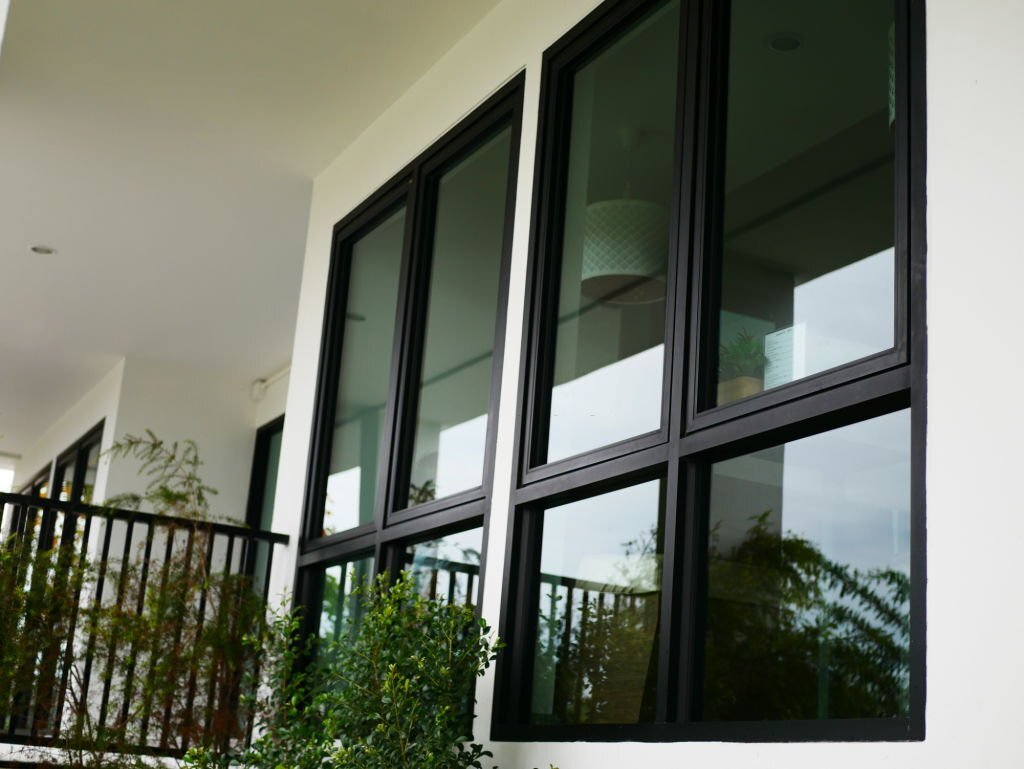Residential Window Tint for Huge Windows: Maintain Convenience and Style
Residential Window Tint for Huge Windows: Maintain Convenience and Style
Blog Article
Exactly How Residential Home Window Tinting Enhances Your Home's Power Effectiveness
Residential window tinting offers a compelling service for homeowners looking for to improve energy effectiveness within their living spaces. By using specialized movies to windows, it effectively decreases heat transfer, therefore stabilizing indoor temperature levels and lessening the requirement for excessive heating or cooling.
Understanding Window Tinting
Recognizing home window tinting is essential for home owners looking for to boost both comfort and power effectiveness in their home. Residential Window Tint. Home window tinting involves the application of a slim movie to the inside or exterior surface area of glass windows. This film can dramatically modulate the quantity of sunshine and warmth that gets in a home, therefore affecting interior climate conditions
There are numerous kinds of window tinting movies readily available, each with distinct homes. The performance of home window tinting is typically gauged by its Visible Light Transmission (VLT) percent, which suggests how much light can pass via the film.
Advantages of Energy Efficiency
Window tinting not only enhances aesthetic appeals yet additionally plays a significant duty in boosting power performance within domestic areas. By minimizing warm transfer with home windows, colored films create a more secure indoor climate, which can cause considerable decreases in energy usage for cooling and heating. This energy efficiency translates right into lower energy bills, supplying house owners with substantial lasting savings.

Additionally, window tinting improves the convenience of living rooms. By lessening glare and blocking dangerous UV rays, tinted windows produce an even more pleasant environment, which can cause improved wellness for residents. The security against UV rays likewise helps maintain furniture and flooring from fading, adding to the long life of household things.
Exactly How Tinting Works
Tinting films operate via a combination of sophisticated products and modern technologies designed to regulate the amount of solar power entering a home. Primarily made up of polyester, these movies usually incorporate metallic or ceramic particles that take in and reflect warm. This dual capacity enables them to considerably lower the penetration of ultraviolet (UV) rays and infrared radiation while allowing visible light to go through.
The performance of home window tinting is determined by its solar heat gain coefficient (SHGC), which indicates just how much solar power is transmitted via the window. Reduced SHGC worths are more suitable as they represent better warmth rejection. Additionally, home window tints can include a range of tones, enabling homeowners to customize their aesthetic choices while enhancing energy efficiency.
Moreover, these films work as a barrier, stopping heat loss during colder months by mirroring interior warmth back right into the space. This thermal insulation result matches the cooling benefits gained throughout warmer months, contributing to a balanced indoor environment year-round. By taking care of solar power efficiently, residential window tinting not only improves comfort but additionally plays a crucial role in reducing power usage and reducing energy bills.
Selecting the Right Color

There are numerous kinds of home window movies offered, including colored, metalized, and ceramic. Colored films are cost-efficient yet might have limited toughness. Metalized films use far better warmth rejection however can hinder electronic signals. Ceramic films resource offer excellent warmth control without endangering visibility and are extremely long lasting, making next them a prominent option.
Noticeable light transmission (VLT) is an additional critical element, as it suggests the quantity of all-natural light that can pass through the colored glass. Homeowners ought to select a color with a VLT that enhances their lighting choices while still supplying adequate glare decrease.
Additionally, assessing the solar heat gain coefficient (SHGC) can assist identify how well a color can obstruct warmth from sunlight. A lower SHGC shows much better heat control, eventually boosting power performance.
Installment and Upkeep Tips
Proper installment and upkeep are important elements in optimizing the benefits of property window tinting. Experts likewise utilize specialized tools and techniques, which can improve the durability and efficiency of the color.
Complying with installation, maintenance is crucial to lengthen the life of the window movie. It is advised to wait at least 30 days prior to cleansing the tinted windows to allow the sticky to cure totally.
Attending to these concerns immediately can protect against more damages and keep energy effectiveness. By adhering to these setup and upkeep suggestions, homeowners can guarantee their window tinting proceeds to give considerable power financial savings and convenience for years to come.
Final Thought
In conclusion, household window tinting offers as a reliable service for enhancing energy efficiency within homes. By lowering warm transfer and obstructing hazardous UV rays, window films contribute to reduce power usage and boosted indoor comfort.
Window tinting includes the application of a thin movie to the inside or outside surface area of glass home windows. By minimizing heat transfer through home windows, colored view it now films create a more steady interior climate, which can lead to substantial reductions in power intake for heating and cooling.The performance of home window tinting is gauged by its solar warmth gain coefficient (SHGC), which shows just how much solar power is sent with the home window. By handling solar energy efficiently, property window tinting not only improves comfort but likewise plays a crucial duty in lowering energy usage and lowering utility costs.
By reducing warm transfer and blocking damaging UV rays, window films add to lower power consumption and boosted interior convenience.
Report this page